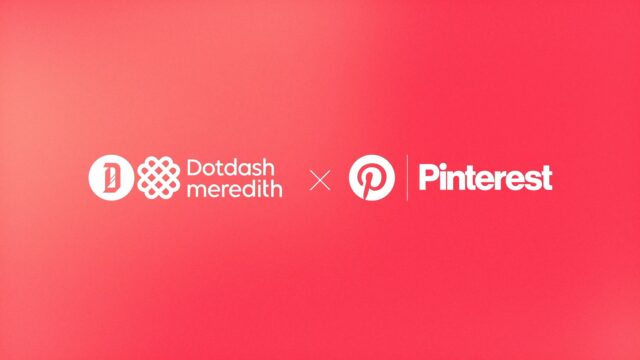Real Simple’s Latest Magazine Is Shoppable, Thanks to Pinterest
Mark your calendar for Mediaweek, October 29-30 in New York City. We’ll unpack the biggest shifts shaping the future of media—from tv to retail media to tech—and how marketers can prep to stay ahead. Register with early-bird rates before sale ends!
Lifestyle publisher Real Simple partnered with social platform Pinterest on Wednesday to produce a shoppable print magazine, part of a broader push from both parties to shorten the distance between the inspiration and transaction phases of the consumer journey.
Real Simple, a Dotdash Meredith property that offers readers home furnishing tips and recipes, introduced the concept to accompany its first Best & Brightest issue, which showcases over 120 products either tested or recommended by Real Simple staff, according to editor-in-chief Lauren Ianotti.
“When we were thinking about the Best & Brightest issue, we wanted to see if there was a way we could make it even more useful for our readers,” Ianotti said. “Pinterest is invested in social shopping, so we thought they’d be a perfect fit.”
The collaboration reflects the growing influence of retail-media strategy on the digital publishing industry, which has long struggled to demonstrate its role in driving consumer behavior.
Dotdash Meredith, which recently joined OpenAI’s Preferred Publisher Program, has historically taken a strategic approach to its editorial. By fastidiously aligning its content with contextually relevant ads, the company has seen its digital advertising revenue climb despite declines across the broader industry.
The partnership with Pinterest—one of several recent tie-ups between the two firms—represents another iteration of that logic. Pinterest, which has itself worked to more closely interweave its inspirational content with ease of purchasing, has embraced the logic of retail media, making it a natural ally for the media company.
Making QR codes feel less transactional
To make the Best & Brightest issue shoppable, the publisher embedded 10 QR codes—used in publishing for decades—in the magazine, one on the introduction page of each of the sections.
When a reader scans the code, they are taken to a Real Simple Pinterest board that features all of the products highlighted in the segment. For instance, the Stuff We Love section features a collection of trendy sunglasses, wedding gifts and new books.
The Best & Brightest editorial content on the Real Simple website also links to the Pinterest boards, giving the package a combined reach of around 14 million—2 million print and 12 million digital, according to Ianotti.
The publisher inserted QR codes by section, rather than by product to prevent the experience from feeling too transactional. Because the QR codes link to Pinterest rather than, say Amazon, the experience feels more like an extension of the editorial, more akin to browsing than buying, according to Ianotti.
“People want a print magazine to be a print magazine,” Ianotti said. “With this, you still get that. The QR codes are present but quiet.”
Related video
Proving attribution
The Pinterest partnership aims to solve a key challenge for publishers in the affiliate space: people infrequently want to purchase in an editorial setting.
Real Simple gets no credit, or budget, if someone discovers a product on its platform but then buys it on Amazon weeks later.
Real Simple readers can pin products that catch their attention, according to Pinterest chief content officer Malik Ducard.
If they later choose to buy one of those products, Real Simple can prove its value as the original source of inspiration.
“Publishers often leverage Pinterest to drive traffic to their brands and publications,” Ducard said. “This is a great example of a publication leveraging—in this case its print magazine—to drive to their presence on Pinterest.”
The tie-up is the latest in a series of partnerships Pinterest has inked with publishers. Last March, it signed deals with Tastemade, Condé Nast and Dotdash Meredith to produce hundreds of pieces of original short-form video.
And last June, Pinterest launched its Red Standard program to expand how publishers can monetize their audiences on the platform.
Through the initiative, publishers can make money by funneling Pinterest users back to their websites, but they can also sell sponsorships directly on Pinterest and—as is the case with the Real Simple partnership— bring in affiliate revenue.
“The partnership makes the inspiration-to-purchase flow much more seamless than before,” Ducard said. “We think it benefits our Pinners and Real Simple’s readers.”
https://www.adweek.com/media/real-simple-pinterest-shoppable-magazine/
